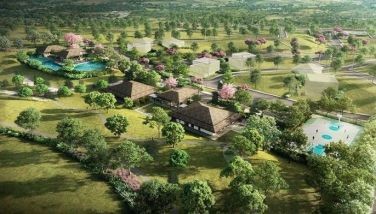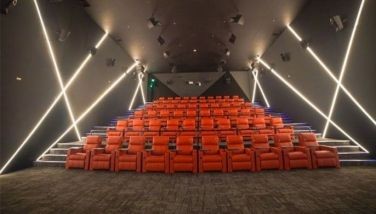Much ado about classrooms
June 3, 2006 | 12:00am
The perennial problem of classroom shortage was spotlighted recently when President Arroyo lost her temper over the report of DepEd officer-in-charge Fe Hidalgo that more than 7,000 new classrooms are needed this June. Hidalgo based her report on the standard 50 students per classroom, but the President corrected her that the computation should be on a 100-per-room basis, meaning one full class in the morning and another in the afternoon.
Hidalgo was right - talking as an educator. The President was also right - talking as a politician.
But the President's idea of making 100 children hold classes in one room is actually an emergency measure. It is presently a phenomenon as most urban centers, although there are some town-based schools that operate a few classes under this arrangement. In growth centers population increase caused by migration and high incidence of birth have exerted pressures on school accommodation. As fast as classrooms are built, as fast too is the needed increase. Resources, however, are limited, so all these years the race between need and the capacity to satisfy that need has been a losing one for education.
There is another problem worth mentioning - the limited land area of many city schools. Expanding these or acquiring new ones is not easy considering the prohibitive real estate valuation in these places. As a result, the government has been putting up one-floor structures in whatever open spaces there are, depriving children of their play areas. Yet even this approach has not solved the problem.
To digress, Cebu City has had a more sensible approach. Getting pinched by classroom shortage as early as 1990, it opted to build high-rise classrooms right where the old structures were. This significantly solved the problems and a good number of its level one classes are now using one room each. With funds available - 130 million pesos as reported - more classes can be held in full day sessions once constructions are completed.
A full day session is the better scheme for many reasons. One is that subject periods can be spaced in such a way that a prolonged exposure to brain work is avoided. Every teacher knows that if classes are held successively for two or three hours without a breathing space in between the learning process is slowed down. In this process time should be made available for extra-scholastic activities as well as for individual counseling and remediation. And since education is primarily "influencing" a sufficient contact time between teacher and learner should be provided for. Values learning is facilitated if pupils and model have ample time for interaction. If such time is constricted, as in a half-day session, the mind may be sharpened, but the heart remains untouched.
In most countryside schools children attend full session classes. There is no rush to finish a lesson because no other class is occupying the room. Teachers and pupils have plenty of time for non-academic activities such as sports, cultural exposure, and community work. Is it any wonder that graduates of rural schools are more disciplined, more behaved, than those from city schools?
I said earlier that a full day session is the better thing, assuming a 50-pupil class. But the ideal thing is a full day session for 25 pupils using one classroom. This is of course an impossible dream. Perhaps, decades from now when our leaders shall have acquired enough political will, this dream will come true.
The problem is not about money. It's where to use that money. Of the more than a trillion budget for 2006, for instance, how much is for education, basic education, at least? I have no figure, but in the last five years that figure gravitated in the vicinity of 100 billion only. And since 86 percent of that is for personnel services, only a small amount is left for projects such as classroom construction.
In most Asian countries, spending for education amounts to more than 25 percent of their national budget. But with us it's only about 16 percent. Miserly spending plus wasteful implementation contributes to our failure to solve classroom shortage. The going cost now is P436 thousand per unit, but how much of this is actually spent for construction? Minus the "seepage" in terms of secret deals, actual cost can be very much less.
Talk of current classroom shortfall, Dr. Hidalgo's figure is actually very conservative. In Central Visayas, for one, the current need is 3,307 classrooms. Since there are 16 regions in the country, the shortage must be mind-boggling if estimated following the accepted standard.
Hidalgo was right - talking as an educator. The President was also right - talking as a politician.
But the President's idea of making 100 children hold classes in one room is actually an emergency measure. It is presently a phenomenon as most urban centers, although there are some town-based schools that operate a few classes under this arrangement. In growth centers population increase caused by migration and high incidence of birth have exerted pressures on school accommodation. As fast as classrooms are built, as fast too is the needed increase. Resources, however, are limited, so all these years the race between need and the capacity to satisfy that need has been a losing one for education.
There is another problem worth mentioning - the limited land area of many city schools. Expanding these or acquiring new ones is not easy considering the prohibitive real estate valuation in these places. As a result, the government has been putting up one-floor structures in whatever open spaces there are, depriving children of their play areas. Yet even this approach has not solved the problem.
To digress, Cebu City has had a more sensible approach. Getting pinched by classroom shortage as early as 1990, it opted to build high-rise classrooms right where the old structures were. This significantly solved the problems and a good number of its level one classes are now using one room each. With funds available - 130 million pesos as reported - more classes can be held in full day sessions once constructions are completed.
A full day session is the better scheme for many reasons. One is that subject periods can be spaced in such a way that a prolonged exposure to brain work is avoided. Every teacher knows that if classes are held successively for two or three hours without a breathing space in between the learning process is slowed down. In this process time should be made available for extra-scholastic activities as well as for individual counseling and remediation. And since education is primarily "influencing" a sufficient contact time between teacher and learner should be provided for. Values learning is facilitated if pupils and model have ample time for interaction. If such time is constricted, as in a half-day session, the mind may be sharpened, but the heart remains untouched.
In most countryside schools children attend full session classes. There is no rush to finish a lesson because no other class is occupying the room. Teachers and pupils have plenty of time for non-academic activities such as sports, cultural exposure, and community work. Is it any wonder that graduates of rural schools are more disciplined, more behaved, than those from city schools?
I said earlier that a full day session is the better thing, assuming a 50-pupil class. But the ideal thing is a full day session for 25 pupils using one classroom. This is of course an impossible dream. Perhaps, decades from now when our leaders shall have acquired enough political will, this dream will come true.
The problem is not about money. It's where to use that money. Of the more than a trillion budget for 2006, for instance, how much is for education, basic education, at least? I have no figure, but in the last five years that figure gravitated in the vicinity of 100 billion only. And since 86 percent of that is for personnel services, only a small amount is left for projects such as classroom construction.
In most Asian countries, spending for education amounts to more than 25 percent of their national budget. But with us it's only about 16 percent. Miserly spending plus wasteful implementation contributes to our failure to solve classroom shortage. The going cost now is P436 thousand per unit, but how much of this is actually spent for construction? Minus the "seepage" in terms of secret deals, actual cost can be very much less.
Talk of current classroom shortfall, Dr. Hidalgo's figure is actually very conservative. In Central Visayas, for one, the current need is 3,307 classrooms. Since there are 16 regions in the country, the shortage must be mind-boggling if estimated following the accepted standard.
BrandSpace Articles
<
>
- Latest
- Trending
Trending
Latest
Trending
Latest

By THE CORNER ORACLE | By Andrew J. Masigan | 1 day ago

By FIRST PERSON | By Alex Magno | 2 days ago
Recommended
























